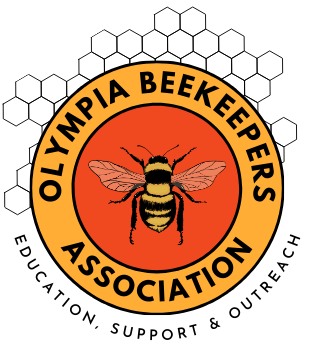Survivorship Survey – by Dewey M. Caron
Last year, 271 OR/WA backyarder beekeepers returned April surveys on overwintering colony losses/survivorship, and management such as colony feeding, sanitation and Varroa control efforts. The results for WA beekeepers are posted on the website: http://pnwhoneybeesurvey.com/wp-content/uploads/2016/07/2016-LeCBA-and-WA-Report.pdf
There were 52 WA respondents included in the WA report
Colony loss levels from all WA respondents were 40% for 8-frame and 59% for 10-frame Langstroth hive beekeepers, 100% for 5-frame nucs and 97% for top bar hives. For 5 Pierce Co respondents, overall losses were 75%, and 47% for 25 Lewis Co beekeepers; from the 52 total Washington beekeeper respondents, the loss level was 60%. With only 52 total responses I DO NOT think it is representative of the survivorship of Washington beekeepers.
The electronic survey will be open March 28th and continue through end of April. It should take no more than 5-7 minutes to complete. Information requested will be very similar so I can compare last year with the current one, but I have trimmed the survey so it is shorter with fewer questions. If you would like to review the inquiries in preparation for the survey, please locate the “2016 PNWals-prep” pdf download available on the website blog page or by simple Google search.
While the main emphasis of the survey revolves around reporting how many colonies you had last fall compared to this spring, which we assess through hive location, hive types and originations (meaning were they overwintered colonies, nucs or packages purchased, swarms or splits), other survey questions sometimes open up more questions than provide answers. Last year, for example, beekeepers doing several wintering preparations improved survival, but feeding or use of the sanitation alternatives we listed did not result in better survivorship, at least not directly. Those beekeepers using sugar shake or mite drop boards to monitor mite buildup had fewer overwintering losses, while beekeepers using other sampling methods did not. Non-chemical treatments did not, directly, improve survivorship, at least for our survey respondents; use of Apivar, essential oil or formic acid significantly improved survivorship
The BeeInformed survey is also conducted in April each year. I ask that you continue to participate in this national survey as well. Although funding is now in the last year of this effort, we are hoping to continue what is now a 10-year record of overwinter loss/survivorship. Our BIP report from last year is posted on the pnwhoneybeesurvey site and I include comparisons to losses in Canada and Europe. Access the BIP survey at: www.beeinformed.org (it is available in April only)
THANK YOU FOR SHARING THIS PAST SEASON. Please consider completing a survey for the 2016-2017 season this April. I am hopeful that there might be a larger County beekeeper response so I can provide additional Association reports.
